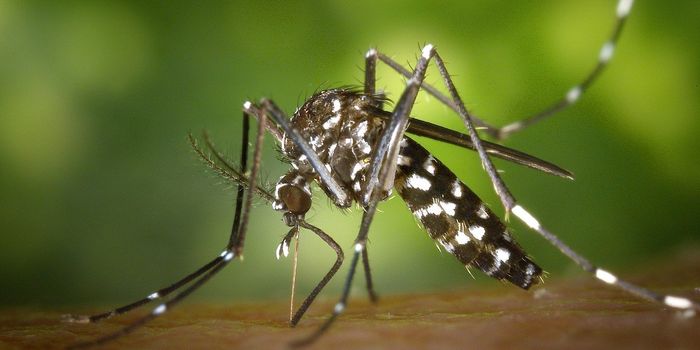Urbanized Tungara Frogs Have Developed Sexier Mating Calls, But Why?
Animals of all kinds change their behavior to adapt to urbanized settings, and tungara frogs are no different. New research published this week in the journal Nature Ecology & Evolution denotes the differences in sexual signaling that a team of international researchers observed while studying the amphibians in Panama City and neighboring tropical forests.
Image Credit: Marcos Guerra/STRI
Tungara frogs get their name from the unique sounds they make. If you happened upon one, you’d probably hear something along the lines of ‘tun’ or ‘tun gara gara.’ According to Wouter Halfwerk, an assistant professor at Amsterdam’s Vrije University the lead author of the paper, one might even say they "sound a bit like pinball machines."
These sounds are particularly crucial for the species because they use them as mating calls. In the case of tungara frogs, the complexity of a male’s mating call defines his sex appeal to nearby females and increases the odds of luring in a mate.
"To their simple tun sound, they can add extra elements like the sound, gara, to make complex calls: tun gara gara—hence their name," Halfwerk explained. "Some people call tiny tungara frogs the acoustic equivalents of peacocks. They are nothing to look at, but just like male peacocks have fancy tails to attract females, tungara frogs add extra sounds to their calls to lure females in."
Related: Learning from frogs that resisted mass extinction
In addition to attracting potential mates, complex mating calls in tungara frogs also have a nasty habit of attracting predators and parasites. Fortunately, the amphibians are intelligent enough to limit their mating calls when they sense that predators are nearby.
But as the researchers learned during their observations, urbanized tungara frogs exhibited ‘sexier’ mating calls than those residing in the nearby tropical forests, raising several questions about how the urbanized lifestyle impacts the frogs and their mating abilities.
To learn more, the researchers simulated the mating calls with speakers and deployed infrared cameras to see what the mating calls would attract in the urban environment versus the natural forest environment.
Intriguingly, the researchers witnessed fewer female responses to the simulated mating calls in the urban environment. Furthermore, no bats or flies appeared to respond to the simulated mating calls in the urban environment.
The findings reveal that male tungara frogs might have to work harder for mates in the city and that predators and parasites could be less of a threat there as well. Conversely, amphibians in the nearby tropical forests didn’t need to work as hard, so the complicated mating calls weren’t as necessary, nor were the elevated risks of attracting predators and parasites worth the effort.
Related: Is this the first flourescent frog ever discovered?
"Just as we change our social relationships in cities, animals are changing their relationships and their behavior in the radically altered biological communities we are creating across the globe," concluded Rachel Page, a co-author of the paper.
As it would seem from the results, competition and risk are two of the most critical factors responsible for the ‘sexier’ mating calls of urbanized tungara frogs. Perhaps future research could validate the findings or discern whether similar mating call differences are seen in other frog species.
Source: Smithsonian Tropical Research Institute (STRI), Nature Ecology & Evolution









